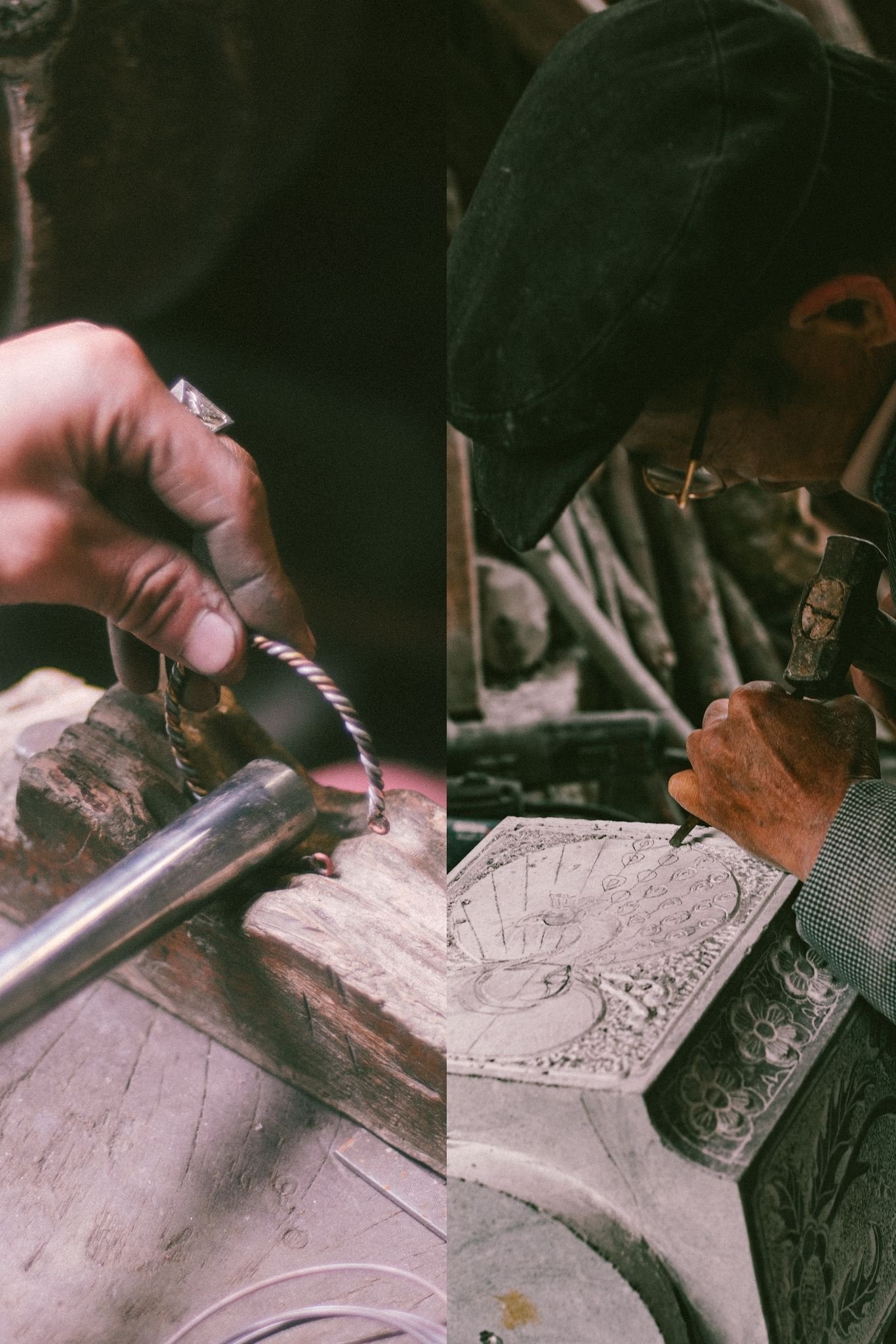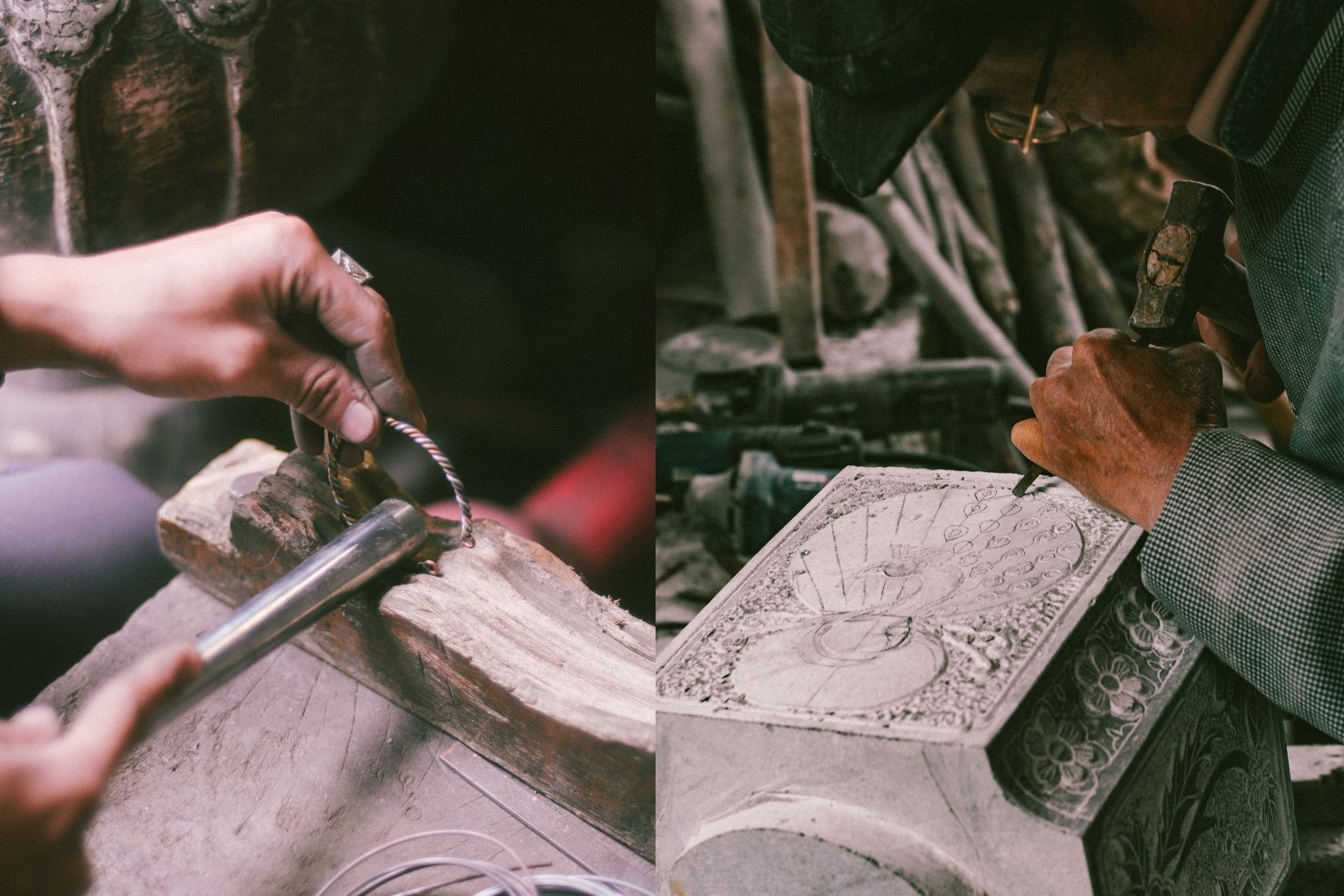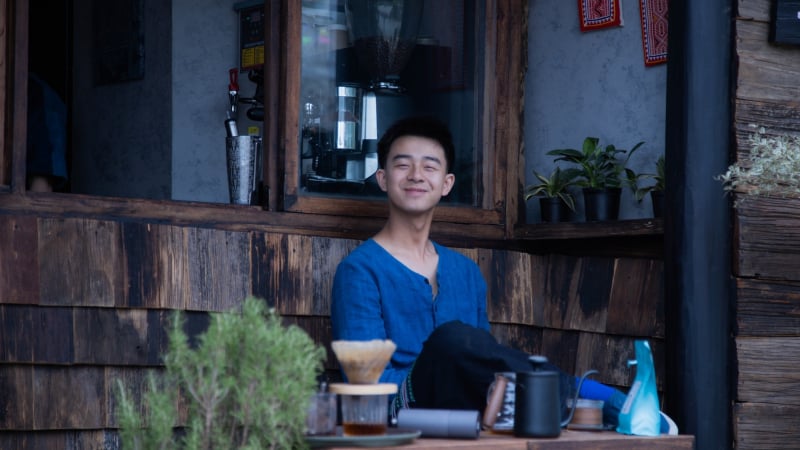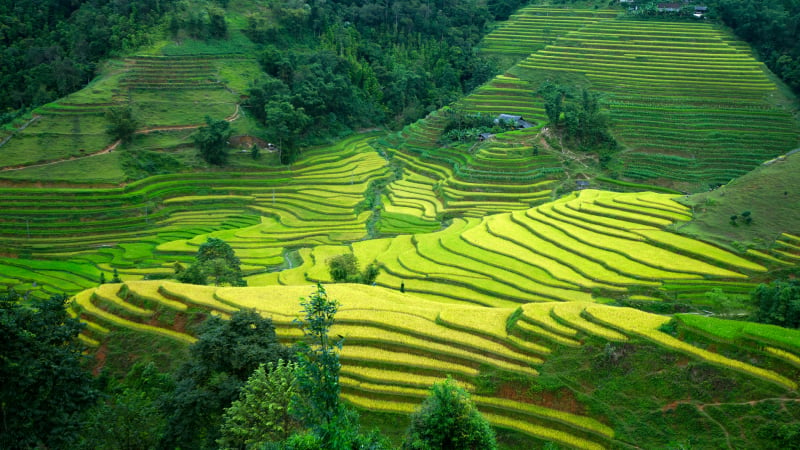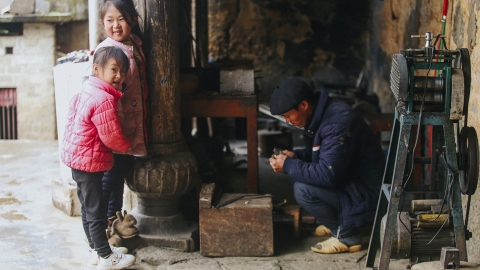Having been in the mountains and forests of the North Pole for nearly ten years, Mr. Nguyen Sy Duc often wanders on the roads, looking for things kept between the villages, the landscapes and the people of the mountainous region. And on such a trip, he discovered cultural features hidden behind the roofs, behind the firelight, and behind the steady sound of hammering echoing from the small slope in Lao Xa. Recalling the conversation with Mr. Mua Se Sinh - an artisan with more than 50 years of silver carving in the village, he realized that in that seemingly quiet place, there exists a separate, vivid and profound world of art.

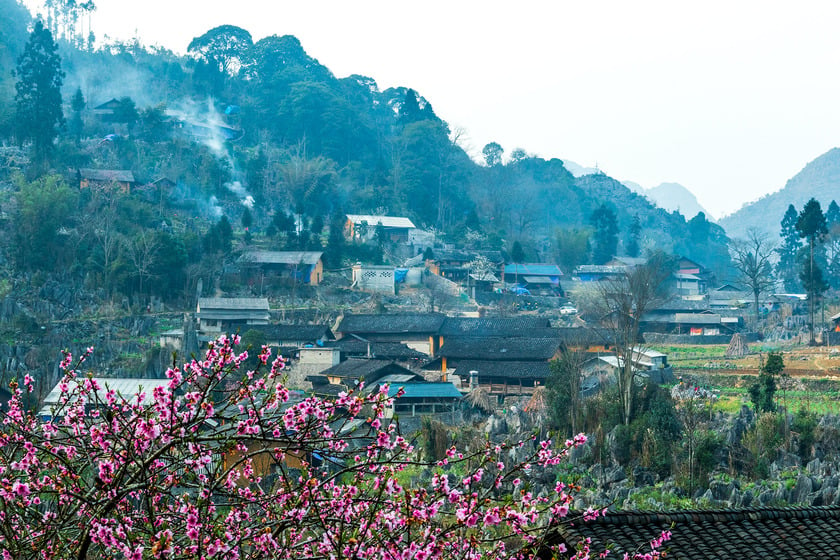
Lao Xa is a small village located in Sung La valley, Sa Phin commune, Tuyen Quang province (formerly Sung La commune, Dong Van district, Ha Giang province).
The touch of stone and the heat of silver in the mountains
There is an interesting thing in Lao Xa that few people notice: the village has two traditional crafts that coexist: stone making and silver making. The two crafts seem unrelated, but when you look closely, you see a beautiful contrast.
Making silver is a journey of meticulousness and rigor. From raw silver bars, artisans must melt, mold, then use hammers, anvils, chisels, files, and carve... to create traditional Mong jewelry. Each line requires patience, delicacy, and skillful technique. Mr. Mua Se Sinh said: "Making silver requires looking deeper than the surface. Seeing in a piece of silver is the wearer's entire life, a wedding, a festival season. So it must not be done carelessly."

Silver making is the traditional profession of the Mua family in Lao Xa, creating jewelry typical of the Mong ethnic group.
On the contrary, stone making in Lao Xa is as gentle as an art of living in the middle of nature. The seemingly lifeless stone slabs are carved by Mong hands with traditional patterns, sometimes waves, sometimes moons, sometimes ancient motifs that have entered the community's consciousness. Some people say that the stone craft here is like writing a wordless story, while the silver craft is like carving the ancient voices of ancestors.
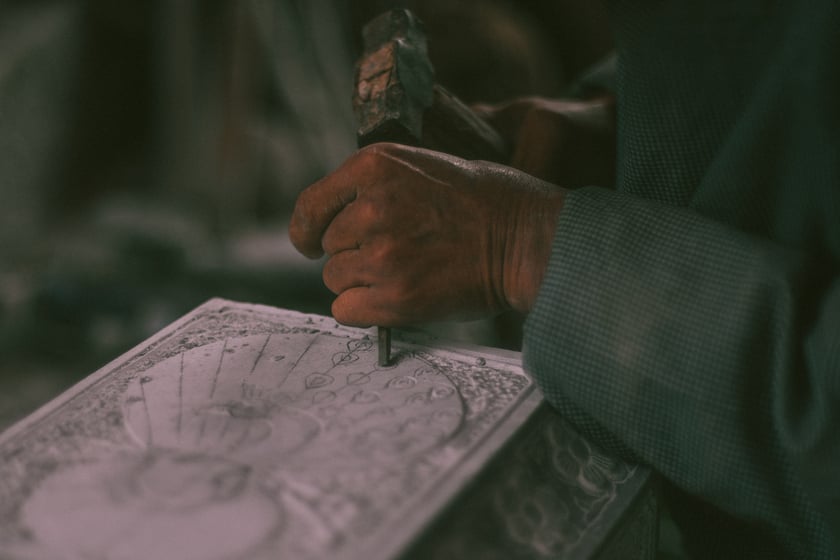
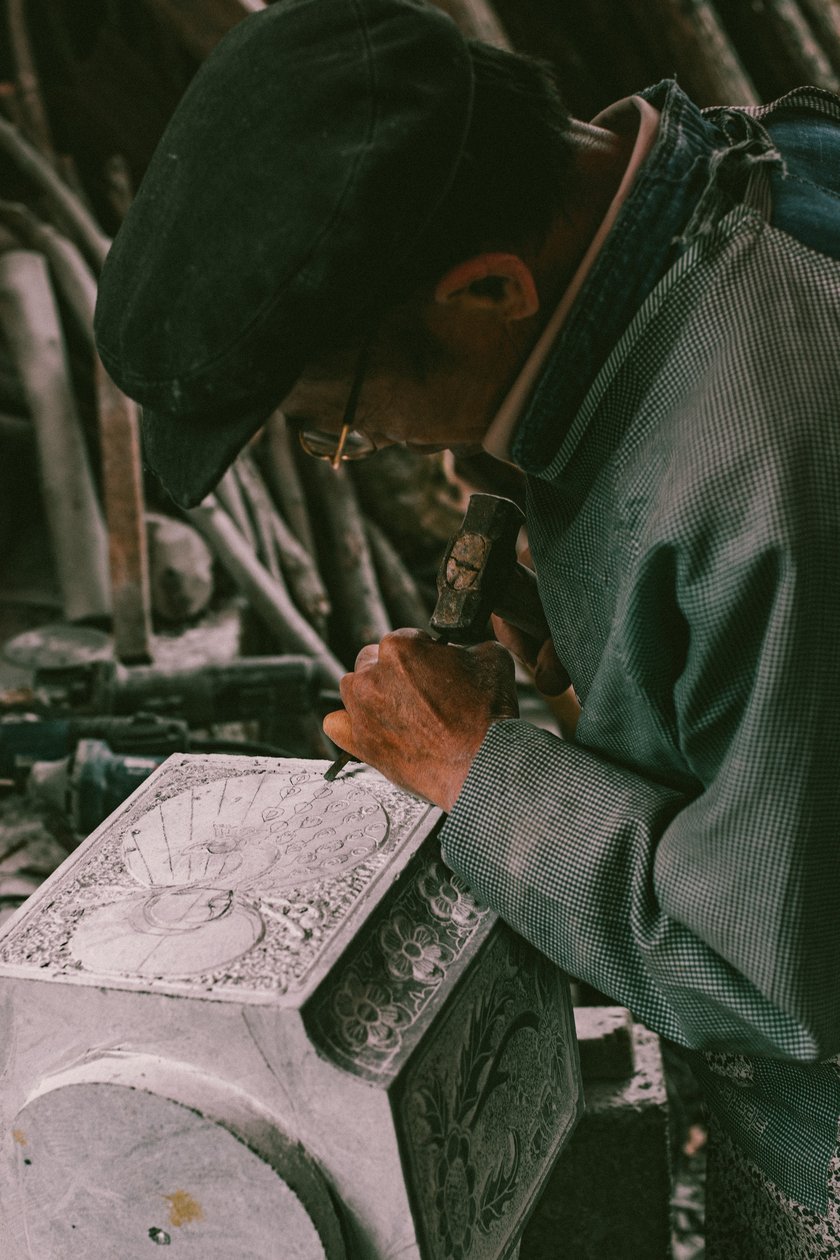
Along with silversmithing, stone carving is also a traditional craft here.
It is this contrast between stone and silver, between heavy and light, between soft and hard that creates a strangely harmonious beauty for Lao Xa. Every time I return, I bring my friends to show them the quiet yet vibrant beauty of the Mong people in the rocky plateau.
Secrets are only passed on in red fire
Not everyone has the chance to learn the silver carving craft in Lao Xa. According to Mr. Mua Se Sinh, this is a craft that is only passed down within the family. That is true, not only because the technique is difficult but also because the soul needs to be nurtured in a special environment.
The traditional silver making of the Mong people in Lao Xa does not use modern machinery. Every step is done by hand. The silver is melted in a charcoal furnace, poured into wooden molds, and then carved by hand. A piece of jewelry such as a necklace, bracelet or chain often takes days to complete. Mr. Sinh can spend dozens of hours just carving a small flower or bird pattern onto the silver surface.

The Mua family has had 9 generations involved in the silver making profession in Lao Xa.
“The Mong people consider silver to be a precious thing not only because of its material value but also because it is associated with spirituality and customs. Newborn children are given silver bracelets for good luck. Brides wear silver on their wedding day to bring blessings. The elderly also wear silver when they die so that they will not be alone in the afterlife,” he said.
The space in Mr. Sinh’s house is almost entirely devoted to his craft. On one side is a stove that is always red with coals to melt silver. On the other side is a work table filled with carving tools, files, and chisels. On the wall hangs finished jewelry samples: necklaces, earrings, brooches, silver rings... sparkling with the cold light of metal against the brown earthen wall.

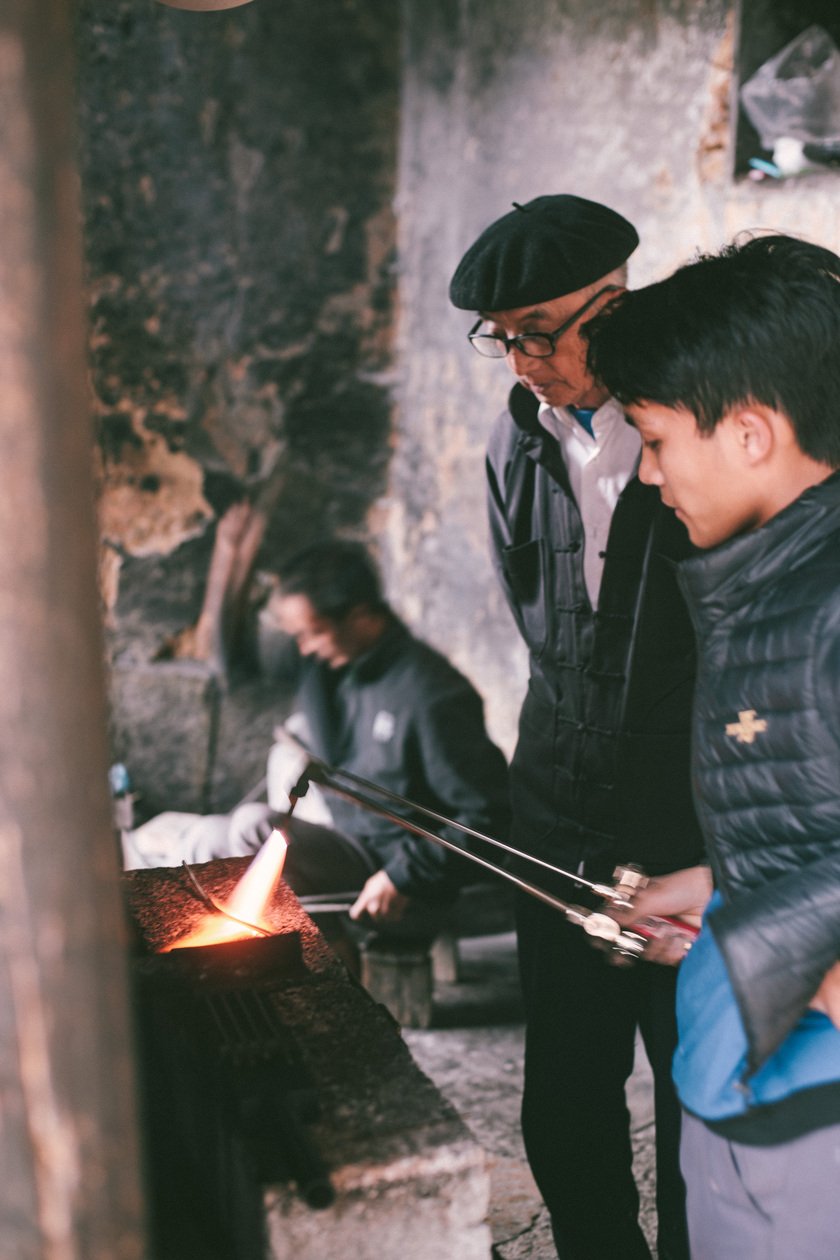
In the dark wooden house, the flickering firelight illuminated his face. In one hand he held a hammer, in the other a piece of jewelry that was slowly taking shape. I sat there staring, feeling like I was watching a performance that only the very lucky could witness.
There were times when he just sat there looking at the silver bar without touching it. When I asked him, he just smiled and said, "You have to think about the beauty before you make it. Silver can't be done just by hammering it."
It is hard to imagine that the goldsmith profession is so hard. Sitting for hours by the fire, the ears get used to the sound of hammers, the eyes get used to the light of the furnace. But in return, when the characteristic patterns such as swirls, saw teeth, and petals gradually appear, the whole space seems to be silent to listen to the sound of silver breathing.
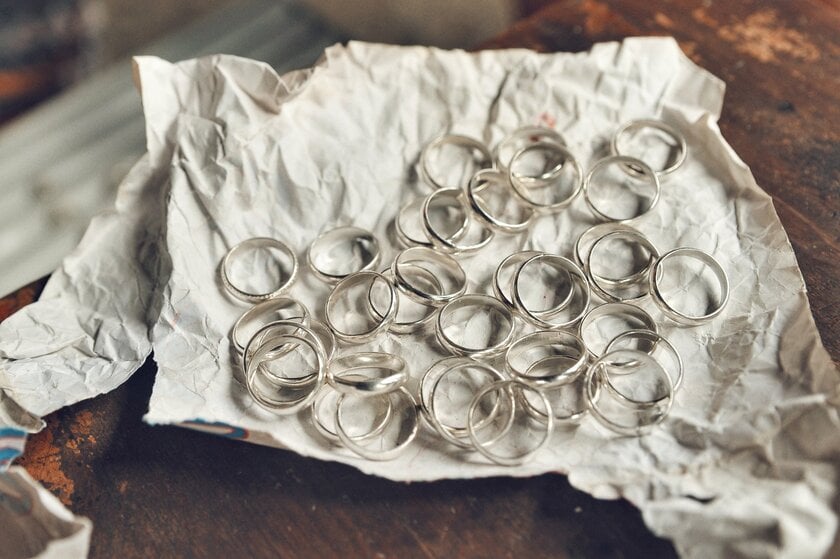
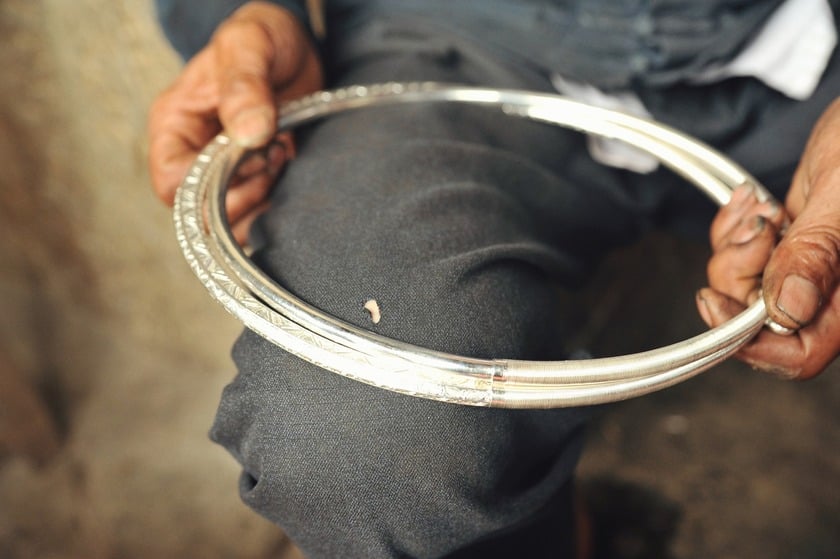

The Mong people consider silver to be a precious object, associated with spirit and customs.
When art is in the Hmong fingerprints
Whether silver or stone, what the Mong people in Lao Xa put into their works is not only technique but also spirit. The mountainous character is evident in every detail. Not too polished like in the city, no need to be gilded or covered with jade, but it makes people stop for a long time to admire.
I once asked Mr. Sinh why he still keeps this profession, while many of his children have gone down to the lowlands to work for companies. He simply said: "It's not that I keep the profession, it's that the profession keeps me. A hand that doesn't make silver is very sad, like a person lost in the mist." That is an art that doesn't need a gallery, doesn't need a halo. It's right in the hands, in the eyes, and in the rhythm of life of the highland people.
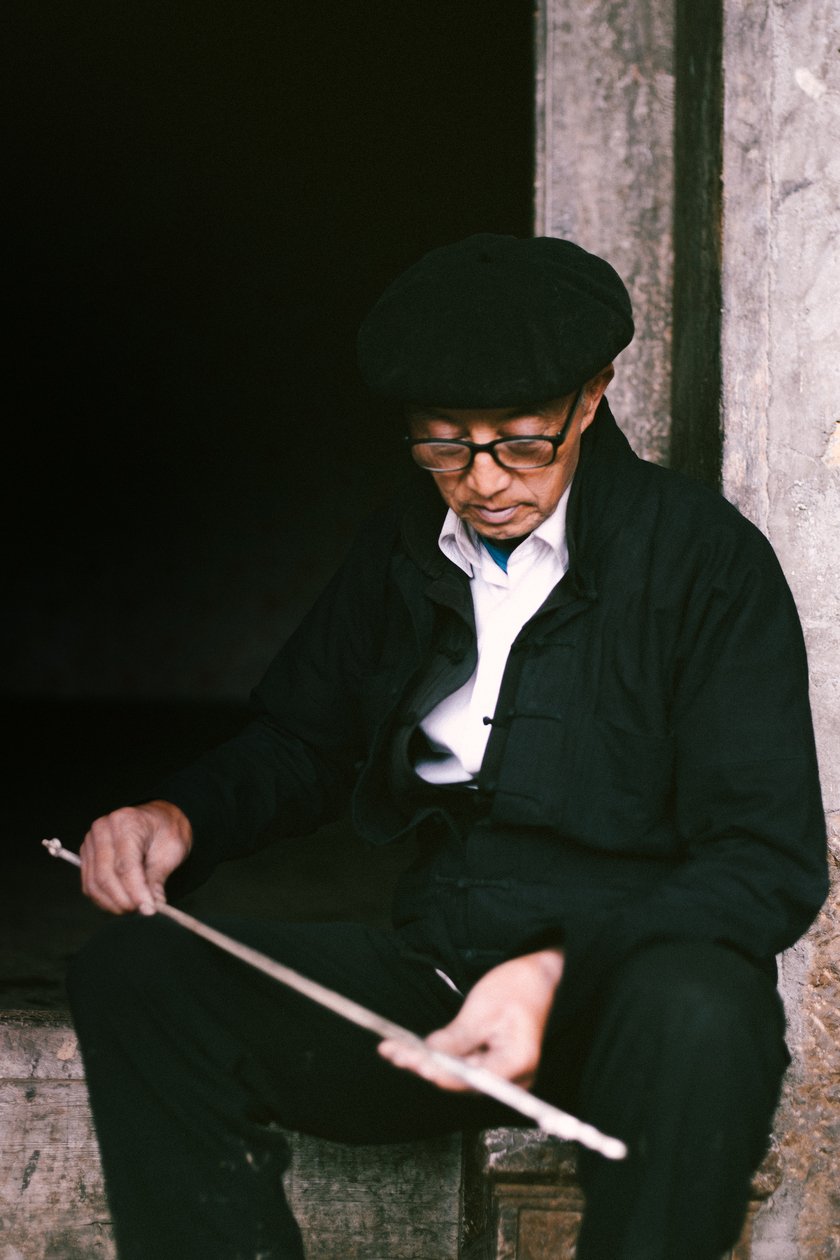
Mr. Mua Se Sinh - an artisan with over 50 years of experience in silver making
Lao Xa is no longer as isolated as before. The roads have been improved, there are more motels and a few small shops serving tourists. However, Lao Xa still retains its inherent quietness. Stone houses looming behind fences, terraced fields, the sound of wind blowing through the mountain passes, and somewhere the sound of chisels hitting silver, blend together to create a simple yet profound picture.
Leaving Lao Xa at dusk, the sunset cast a bronze coat over the yin-yang roofs. The village was as quiet as the first time I arrived. But in that quietness was a vibrant world with the clanking of chisels and the undying red fire in each house.





